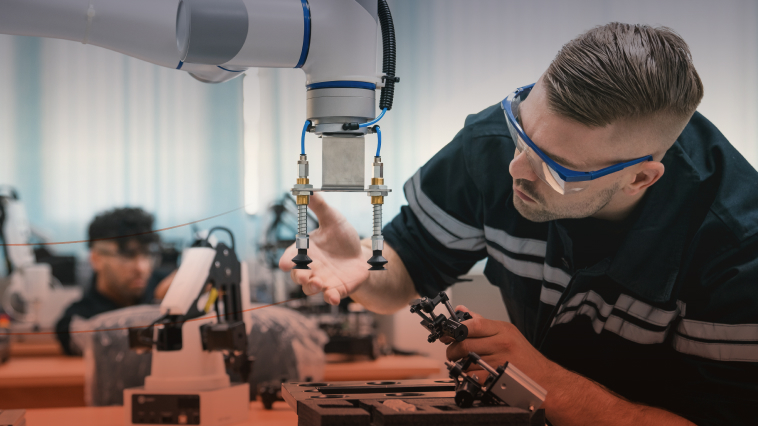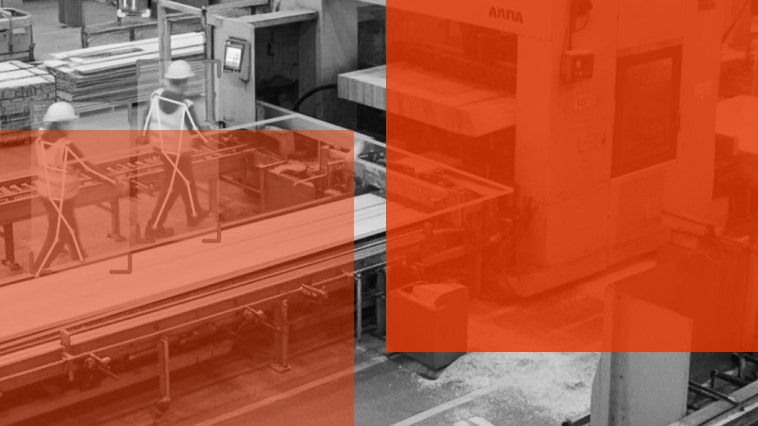Recently, our team at Intenseye has been encountering a recurring theme in discussions with EHS teams worldwide: a noticeable stagnation in safety performance metrics, commonly referred to as the safety performance plateau. This issue has become increasingly prominent, reflecting a widespread concern across various industries.
This plateau is not just a statistical anomaly; it represents a barrier to further progress in reducing workplace accidents and fatalities.
Safety professionals have tried their best, but traditional methods may not be cutting it anymore. It shows that while they've helped before, with workplaces changing, we need modern ways to keep workplaces safe and ease the burden of EHS teams.
Embracing the technology for safer workplaces
Historically, workplace safety has seen transformative shifts from the perilous conditions of the early Industrial Revolution to the establishment of OSHA in 1971, which led to a significant decrease in workplace fatalities and injuries.
For example, before OSHA's establishment, the U.S. saw approximately 14,000 workplace fatalities annually, a number significantly reduced in the following decades. However, while these strides in legislation and policy have dramatically reduced incidences, the decline in workplace accidents and fatalities has plateaued in recent years.
For instance, in the US, the total recordable incident rate (TRIR) has declined from 5.0 in 2003 to 2.8 in 2018, but the rate of reduction has been much slower in recent years.
Despite rigorous standards and compliance checks, critical areas such as fall protection, hazard communication, and respiratory protection remain among the most frequently violated OSHA standards. The Bureau of Labor Statistics (BLS) reports that in 2020, 4,764 workers died on the job, with transportation incidents, and falls, slips, and trips accounting for nearly half of these fatalities.
All of these statistics showcase why organizations shift to the "root cause" method for workplace safety as explained by the BLS. This method focuses on finding the main reasons for workplace accidents by investigating the core reason further.
It involves understanding the sequence of events, and frequency of incidents, assessing the severity, and identifying contributing factors. This method aims to go beyond superficial fixes and address the root causes leading to injuries and fatalities.
This plateau signals a clear message: while compliance with existing standards is crucial, it is not enough. The changing dynamics of the modern workplace, including the introduction of new technologies and materials, necessitate a dynamic and innovative approach to safety management.
Warning signs of the safety plateau
Within the wider industry perspective, a safety plateau is noted when the collective safety performance among different organizations attains a specific level and halts any further advancement. While initially achieving a high level of safety performance is commendable, maintaining this status quo poses significant risks. Christian Harris outlines the 4 dangers associated with a safety plateau in the industry:
Complacency
Organizations may fall into complacency as the industry attains a notable level of safety performance. This complacency fosters a false sense of security, diminishing vigilance toward identifying and mitigating potential safety hazards. Consequently, employees are left vulnerable to risks and accidents.
Even though all recovery measures have been taken, an approach that does not focus on control measures and the root cause of safety incidents is doomed to fail. In a workplace where all training is regularly conducted and precautions are taken against various risks like PPE detection, individuals inevitably become complacent.
This highlights that management must think differently through the various phases of the safety journey.
Stagnation
Organizations entrenched in a safety plateau fail to recognize the necessity of continual improvement. Without proactive efforts to enhance safety protocols and procedures, the industry's overall safety performance can stagnate. This lack of progress increases the likelihood of accidents and compromises employee well-being.
Moreover, in an environment of stagnation, the organization not only jeopardizes the safety of its workforce but also risks losing its competitive edge. As competitors evolve and adopt more advanced technologies, stagnant organizations fall behind, facing increased operational costs, extra lost time, and potential reputational damage.
Therefore, embracing a culture of continuous improvement isn't just about meeting regulatory requirements; it's about safeguarding the organization's future viability and maintaining its position as an industry leader.
False sense of security
A false sense of security is when a person feels safe or secure in a situation, but the perception of safety is not based on accurate or reliable information
The industry, when stuck in a safety plateau, may mistakenly believe that current safety measures are adequate. This false sense of security can be particularly fatal in environments prone to high-risk operations. Failure to acknowledge existing vulnerabilities leaves organizations ill-prepared to prevent potential safety incidents.
In such situations, we often observe that safety measures are reactive, meaning that they are implemented in response to incidents or near-misses, with reporting occurring after the incident. Moreover, there is a tendency to accept recurring risks as normal conditions.
Surrendering to the status quo can create a comfort zone, which, from a safety standpoint, is concerning because as humans, we tend to prefer staying within our comfort zones.
Risk of unseen incidents
Despite prior achievements in safety performance, the industry remains susceptible to safety incidents when trapped in a safety plateau. Without proactive measures to address evolving risks and challenges, the likelihood of accidents persists. This ongoing risk underscores the urgency for proactive interventions to safeguard employee safety.
Move beyond the safety plateau with AI
EHS teams juggle numerous tasks every day, including incident reporting, implementing safety programs, conducting safety audits, toolbox talks, meaningful interpretation of data, safety checklists, compliance efforts, and establishing communication between frontline workers and management.
At the same time, only a few EHS professionals attempt to identify risks in facilities where thousands of people work, many of which are unseen. Intenseye's safety management software is a robust set of EHS analytics, task management, incident reporting, and compliance tools built to equip safety teams to save time, money, and lives through data and efficiency.
Another thing to break the safety plateau is transitioning from traditional lagging indicators to real-time leading safety indicators for sure. While lagging indicators offer retrospective insights, leading indicators provide proactive measures for enhancing workplace safety.
Convincing organizations to adopt this approach necessitates a cultural shift towards proactive safety leadership, as highlighted by Intenseye's experience with a flagship facility.
By deploying Intenseye's real-time analytics, organizations can detect and reduce critical unsafe acts & conditions 24/7, prompting a company-wide integration of the technology.
This shift towards leading indicators not only prioritizes safety initiatives but also fosters a shared safety culture, bridging the gap between frontline teams and management. Furthermore, AI-powered safety management software empowers EHS teams by automating processes, tracking KPIs in real-time, and engaging stakeholders more effectively, ultimately driving continuous improvement and enhancing workplace safety.
While past efforts in workplace safety have been commendable, the persistent plateau in safety performance metrics underscores the need for a new direction. Intenseye embodies this new frontier, offering innovative solutions that not only complement but enhance traditional safety measures. It's time to move beyond compliance and embrace a future of safety management where workplace accidents are not just reduced but addressed from the very beginning.



